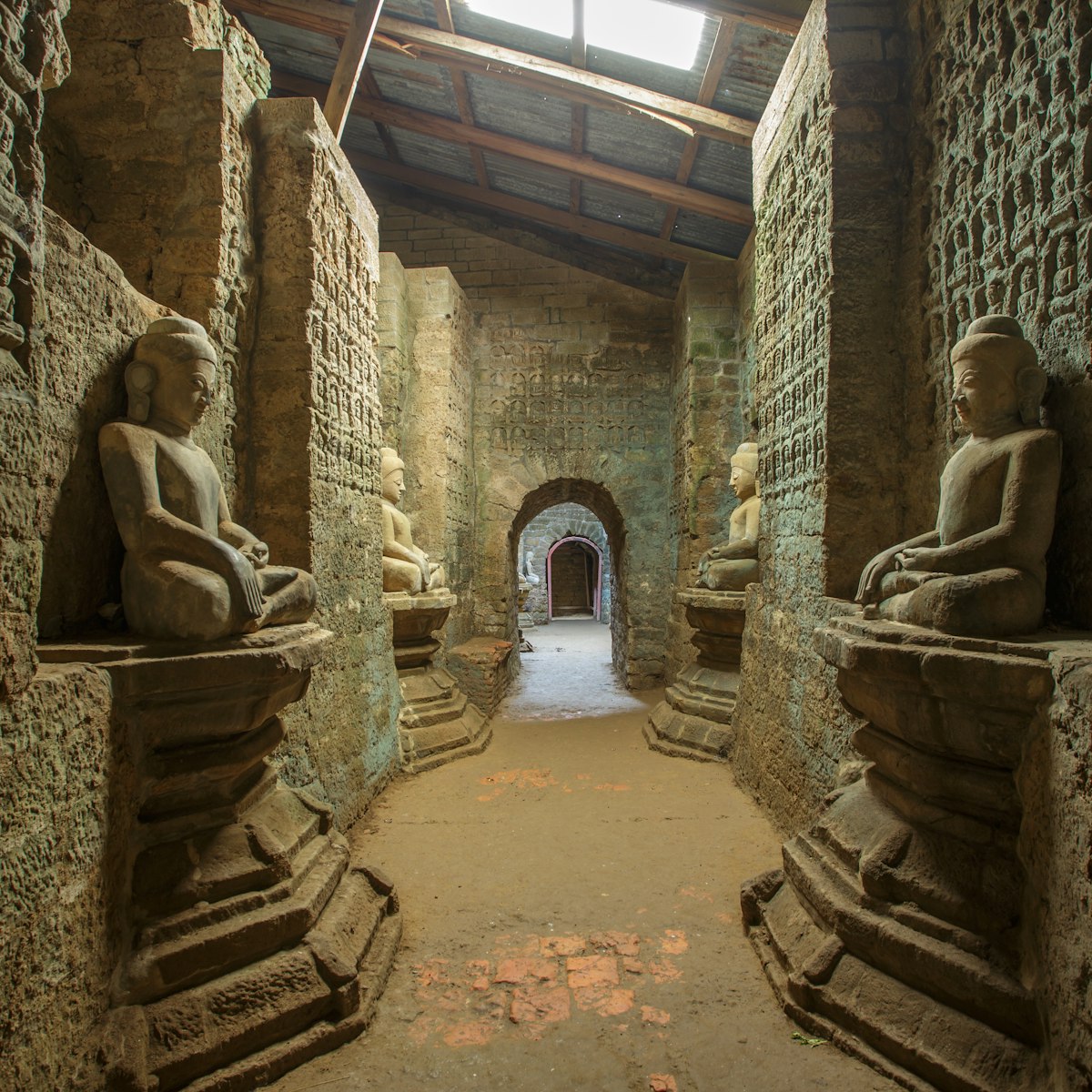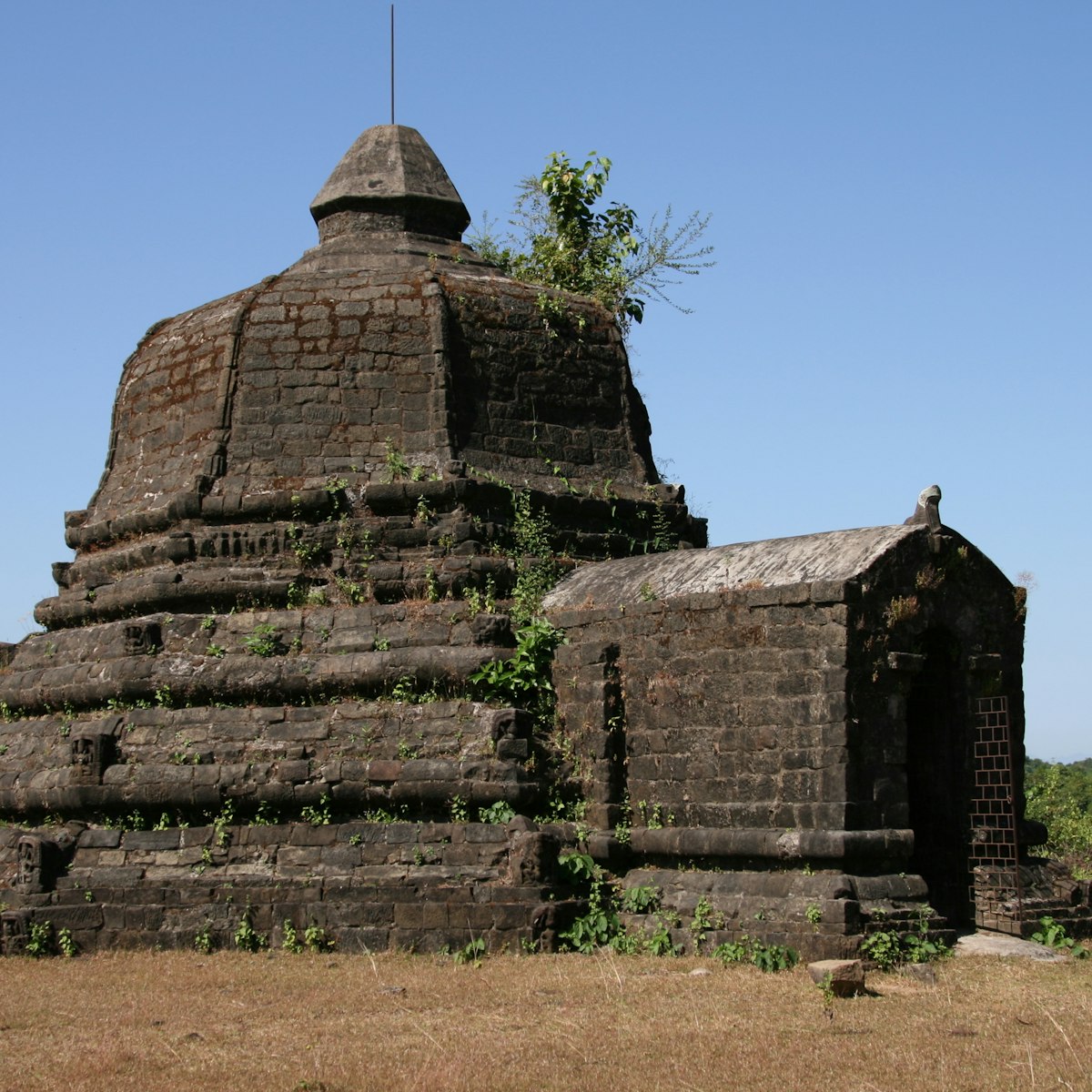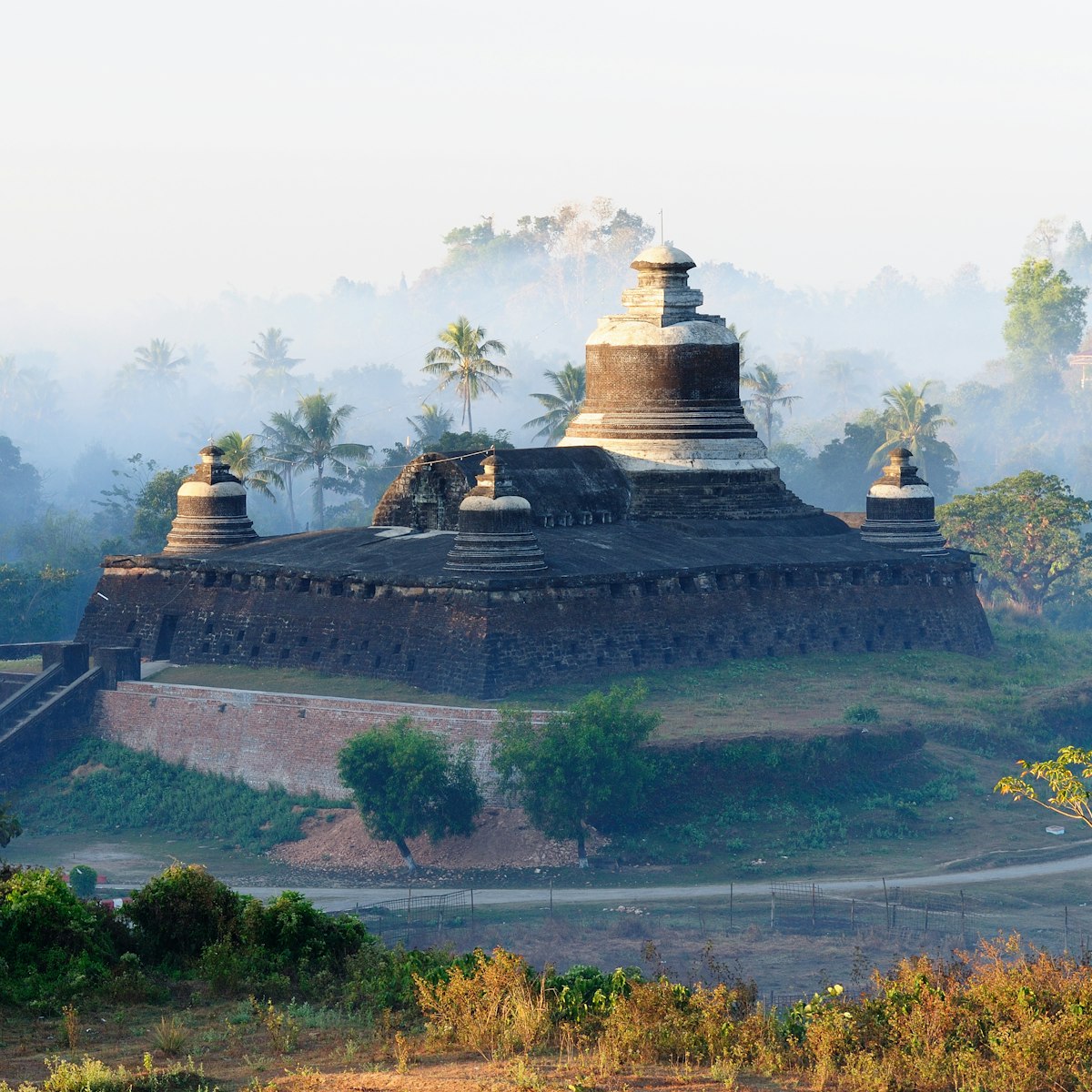Shittaung means ‘Shrine of the 80,000 Images’, a reference to the number of holy images inside. King Minbin, the most powerful of Rakhine’s kings, built Shittaung in 1535. This is Mrauk U's most complex temple, a frenzy of stupas of various sizes: 26 surround a central stupa. Thick walls, with windows and nooks, encircle the two-tiered structure, which has been highly reconstructed over the centuries – in some places rather clumsily.
Outside the temple, beside the southwestern entrance stairway, and inside a locked mint-green building, is the much-studied Shittaung Pillar, a 10ft-high sandstone obelisk brought here from Wethali by King Minbin. Considered the ‘oldest history book in Myanmar’ (by the Rakhine, at least), the obelisk has four sides, three inscribed in faded Sanskrit. The east-facing side likely dates from the end of the 5th century. The western face displays a list dating from the 8th century, outlining Rakhine kings from 638 BC to AD 729 (King Anandacandra).
Lying on its back next to the pillar is a cracked, 12ft-long sandstone slab featuring an engraved lotus flower (a Buddhist motif) growing from a wavy line of water and touching an intricately engraved dhammacakka (Pali for ‘Wheel of the Law’).
Along the outer walls, several reliefs can be seen (some are hard to reach); a few on the southern side are rather pornographic.
Inside the temple’s prayer hall you’ll see several doors ahead. Two lead to passageways that encircle the main buddha image in the cave hall (which can be seen straight ahead).
The far-left (southwestern) doorway leads to the outer chamber, a 310ft passageway with sandstone slabs cut into six tiers. More than 1000 sculptures depict Rakhine customs (eg traditionally dressed dancers, boxers and acrobats), beasts of burden and hundreds of Jataka (scenes from the Buddha’s past 550 lives). At each corner are bigger figures, including the maker, King Minbin, and his queens at the southwestern corner. The passage opens in the front, where you can step out for views.
Next to the outer chamber entry is a coiling inner chamber leading past scores of buddha images in niches and passing a footprint where – it’s said – the Buddha walked during his post-enlightenment. Once you get to the dead end, double back to the hall and see if you can feel the passageway becoming cooler. Some claim it does, symbolising the ‘cooling effect’ of Buddhist teachings.



